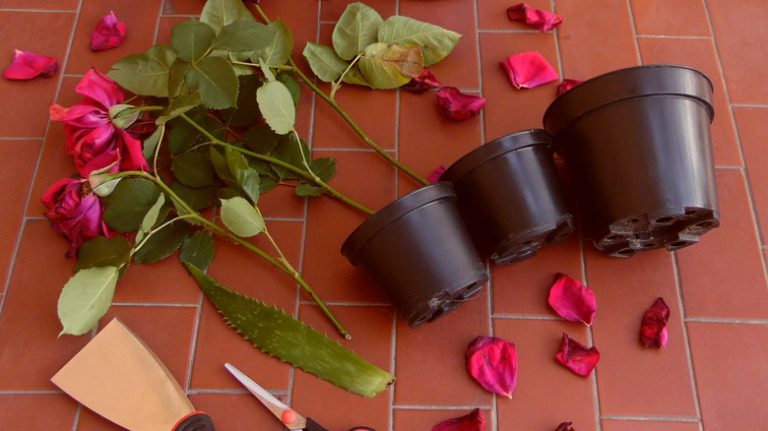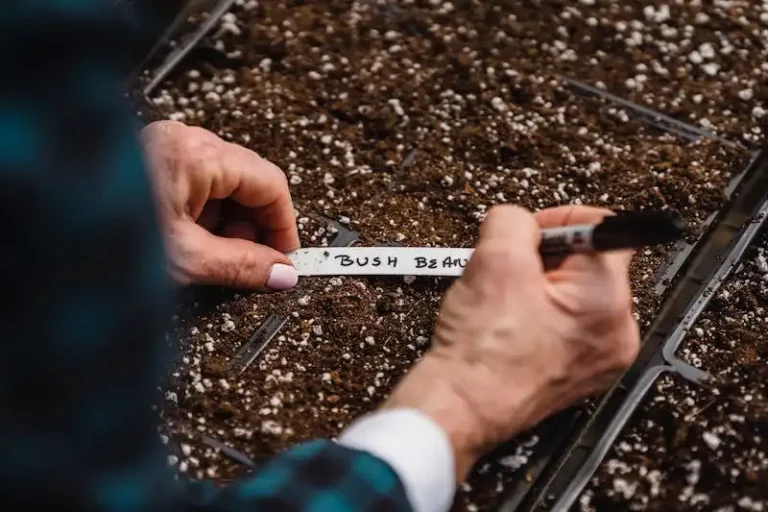In the world of wildflowers, Queen Anne’s Lace is one of the superstars. With its delicate white blooms swaying in the breeze, it’s hard not to be captivated by this beautiful plant. Also known as Daucus carota, Queen Anne’s Lace is a member of the carrot family, and it certainly lives up to its name with its feathery leaves and flat-topped umbels of tiny flowers. When you see a field of Queen Anne’s Lace, it’s like a copy of the night sky, dotted with stars.
Although its name suggests a royal connection, Queen Anne’s Lace is actually a wildflower that can be found in many habitats. It often grows alongside goldenrods on roadsides and in meadows. In fact, Queen Anne’s Lace is sometimes considered a weed due to its ability to spread rapidly and take over cultivated areas. When it comes to landscaping, this wildflower can be a showy addition, especially when planted in masses or used as a backdrop for other flowers of similar colors.
If you ever come across Queen Anne’s Lace, please take a moment to appreciate its beauty and admire its delicate intricacy. The legend goes that Queen Anne was so skilled at lace-making that she swore to make an intricate lace flower for each wildflower she encountered. And so, each year, the fields are peppered with these stunning blooms. Queen Anne’s Lace is also a favorite among butterflies, bees, and other pollinators, making it an essential part of the ecological cycle and a valuable addition to any garden.
Despite its allure and ecological importance, Queen Anne’s Lace can be an invasive weed in some regions. In fact, here at the Brooklyn Botanic Garden (BBG), it is often referred to as “Brooklyn’s weed” due to its prevalence along roadsides and in open fields. If left unchecked, it can outcompete native plants and cause imbalances in the ecosystem. So, while its beauty is undeniable, it’s important to manage populations of Queen Anne’s Lace carefully to maintain the balance between natural and cultivated areas.
But the story of Queen Anne’s Lace doesn’t end there. Did you know that the plant also has edible parts? The young roots can be peeled and consumed raw or cooked, and the seeds can be ground into a flavorful spice. Just be sure to positively identify the plant before harvesting and consult a reliable guide or expert if you’re unsure. Queen Anne’s Lace truly is a versatile wildflower that offers beauty, ecological value, and even a potential food source.
In conclusion, Queen Anne’s Lace is not just another weed that pops up along the roadside. Its delicate flowers and intricate leaves make it a standout in any prairie or meadow, and its ecological importance should not be underestimated. However, it’s important to remember that this plant can be invasive and potentially harmful to native species if allowed to spread unchecked. So, next time you see that familiar spray of white flowers, take a moment to appreciate the beauty of Queen Anne’s Lace, but also be mindful of its potential impact on the natural habitat.
Queen Anne’s Lace Daucus carota
Queen Anne’s Lace, or Daucus carota, is a flowering weed that can be found in many parts of Minnesota and other flat, open habitats. It is also known by other names such as wild carrot, bird’s nest, and bishop’s lace. This weedy plant is often considered a nuisance by gardeners and landscapers, as it can quickly spread and dominate an area.
The distinguishing feature of Queen Anne’s Lace is its flat-topped clusters of small white flowers that are surrounded by a ring of feathery leaves. The flowers, which bloom from June to August, are similar in appearance to those of related plants like asters and goldenrods. The height of the plant can vary, but it usually reaches about 3 feet tall.
Queen Anne’s Lace is often planted in cultivated gardens as an ornamental plant, but it can also be found growing wild along roadsides, in meadows, and among other wildflowers. Despite its weedy nature, some people appreciate the delicate beauty of its flowers and use it in floral arrangements or dried flower crafts.
While Queen Anne’s Lace may look similar to its close relative, the carrot plant, it is important to note that the two are not the same. Queen Anne’s Lace is not edible and can cause poisoning if ingested. Therefore, it is important to be able to distinguish between the two plants and avoid consuming Queen Anne’s Lace.
If you are interested in learning more about Queen Anne’s Lace or other weeds, consider visiting the website “Weed of the Month” sponsored by the University of Minnesota Extension Services. There, you will find more information about this weed and its features, as well as detailed photos and comments from experts in the field. You can also join the discussion and share your thoughts or ask questions about Queen Anne’s Lace and other weedy plants.
So, next time you come across Queen Anne’s Lace in your neighborhood or while exploring nature, take a moment to appreciate its delicate beauty, but remember to keep a safe distance and avoid its poisonous parts.
Distinguishing Features
Queen Anne’s Lace (Daucus carota) is a weedy flower that can often be found near lakes and in prairie habitats. Its detailed and showy white flowers are sometimes mistaken for cultivated carrot plants. The flowers are clustered together in an umbrella-like shape and have a delicate, lace-like appearance, hence the name “Queen Anne’s Lace”.
One of the distinguishing features of Queen Anne’s Lace is its finely divided leaves that resemble lace, which can help gardeners identify the weed. Another distinguishing feature is the presence of a single dark purple or red flower in the center of the flower cluster, often known as “Cleo”. This small, dark flower is said to be a drop of Queen Anne’s blood and serves as a reminder of a myth surrounding the plant.
Although Queen Anne’s Lace is a beautiful wildflower, it can be invasive and weedy in some areas. It is important to prevent it from spreading and taking over other plants. This weed is capable of producing hundreds of seeds, which can cause it to rapidly colonize an area and outcompete native vegetation.
In more natural or wild areas, such as prairies and meadows, Queen Anne’s Lace can serve as an important food source for pollinators and other wildlife. Bees and butterflies are known to frequently visit the flowers and feed on the nectar. Additionally, some birds are known to use the dried flower heads as nesting material.
It’s worth noting that Queen Anne’s Lace is not suitable for consumption as it closely resembles the highly toxic poison hemlock plant. Mistaking Queen Anne’s Lace for its dangerous look-alike has led to serious poisoning in the past, so caution should always be exercised when foraging for wild plants.
If you’d like to learn more about Queen Anne’s Lace, visit the Brooklyn Botanic Garden’s website where you can find articles, photos, and recipes featuring this interesting weed of the month.
Flowers
Flowers are a special wonder of nature. They come in a variety of colors, shapes, and sizes. From the showy and vibrant to the more subtle and delicate, flowers can brighten any landscape or garden. They are also an important part of the natural ecosystem, providing food and shelter for insects, birds, and other wildlife.
Some flowers, like Queen Anne’s Lace, are considered weeds because they can be invasive and easily spread across fields, gardens, and roadsides. However, many gardeners appreciate their beauty and cultivate them in their flower beds. Queen Anne’s Lace, with its feathery leaves and delicate white flowers, can add a touch of elegance to any garden.
There are many native flowers that are more appropriate for landscaping and can help support the local ecosystem. Goldenrods, asters, and black-eyed Susans are just a few examples of native flowers that are popular in gardens and prairies.
If you are unsure about what flowers to plant in your garden or have questions about landscaping services, it’s always a good idea to seek advice from a professional. They can provide information about the most suitable flowers for your area, distinguish between invasive weeds and cultivated flowers, and offer guidance on soil preparation and care.
To learn more about flowers and gardening, you can visit your local garden centre or follow gardening series and articles online. There are also many resources available, such as books and websites, that can provide helpful tips and recipes for creating a beautiful and sustainable garden.
So, whether you are a seasoned gardener or just starting out, flowers are sure to bring joy and beauty to your outdoor space.
Leaves
The leaves of Queen Anne’s Lace are one of its distinguishing features. They are divided into smaller leaflets, giving them a delicate and lacy appearance. The leaves are fern-like and can reach a height of up to three feet. They grow in a basal rosette at the base of the stem. Queen Anne’s Lace leaves are light green in color and have a feathery texture.
One interesting fact about Queen Anne’s Lace leaves is that they are edible. However, it is important to note that this plant is often mistaken for the highly poisonous Hemlock. Therefore, it is crucial to be able to correctly identify Queen Anne’s Lace before consuming any part of it.
Queen Anne’s Lace also has a folklore legend associated with its leaves. According to the legend, Queen Anne pricked her finger and a drop of blood fell onto the lace she was sewing. This is said to be the reason why the flower has a purplish-red flower in the center, resembling a drop of blood.
Apart from its unique appearance, the leaves of Queen Anne’s Lace also have ecological importance. They provide support for other plants, such as goldenrods and asters, as they grow towards the light. The leaves create a natural canopy for these plants, preventing the growth of weedy species that could hinder the restoration of prairie ecosystems.
In addition to its ecological role, Queen Anne’s Lace leaves are a common topic among landscapers and gardeners. They add a touch of elegance and showiness to garden designs with their delicate and feathery foliage. The leaves also serve as shortcuts for identifying the plant in the wild.
In summary, the leaves of Queen Anne’s Lace are a special part of this invasive weed. Their lacy and delicate appearance, along with their ecological and design features, make them a noteworthy aspect of this plant. Whether you are interested in the folklore surrounding Queen Anne’s Lace or are looking for information on its ecological role, the leaves of this plant have much to offer.

